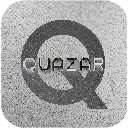Supreme Procedural Wood Materials
Supreme Procedural Wood Materials
You can create literally any type of wood with this materials/nodes pack.
Supports the Blender 3.0 Asset Browser.
Blend file has the "K.M. - " prefix and each material has the "Spr.Wd. - " prefix. PNG Thumbnails included.
You will get 7 unique custom node groups and 8 ready-to-use materials.
Materials:
1. Spr.Wd. - 3D Planks
2. Spr.Wd. - Basic
3. Spr.Wd. - Bright
4. Spr.Wd. - Diagonal Planks
5. Spr.Wd. - Jungle
6. Spr.Wd. - Paint 1
7. Spr.Wd. - Paint 2
8. Spr.Wd. - Prin
Node groups:
Vector Brick Texture - this thing is like a brick texture. But in XYZ dimensions. You can scale in all 3 axis, randomize it and change the mortar. Of course you can use with any type of textures with brick pattern.
Diagonal Tiles - based only on XY axis so you will need a UV unwrap. But this is not a problem because those type of textures only need for a walls or for a floor. And again, you can use it with any textures and images. Used Erindale’s tutorial to make basic math for this node group.
Edge Mask - customizable mask for edge scuffs. It is based on pointiness information and because of that when you use adaptive subdivision quantity of normals will grow and there will be less edges. This issue is solved in the basic wood preset material.
Wood Texture - speaks for itself. The basic node group for the wood material. Also there are 4 presets to choose and you can add more if look inside it.
Wood Mixer - a comfortable tool to unite all these node groups.
Wood Paint - combine wood nodes into this one and get all maps for the painted wood.
Stretch Fix - when you plug non-square images to square UV map it is stretching. Type resolution of the image to this thing to fix it.
If you are new to shaders then watch this start lesson on YouTube - https://www.youtube.com/watch?v=84ihoMLGkxQ&t
Why procedural shader textures instead of regular PBR maps?
- Infinite
resolution. Textures that you normally use are always limited by their
resolution and in close they are just mess of pixels. Procedural
textures, on other hand, have infinite resolution and a huge number of
elements that can be changed to suit your needs!
- With W data you can make a different texture with the same settings
to a group of objects. For example imagine that you need to make a
wooden fence. If you use a regular texture, then all your boards will
be the same, you can of course change the scale and change the
coordinates a little, but you still be limited to one image. Using
procedural textures, you can customize the materials as you like using
object data and W input. Apply it to all objects so they will be
absolutely unique, but consisting of the same material.
- Mix with other procedural materials and textures using mask
outputs. Combine colour, height and other maps with mixRGB node and mask outputs.
- And if you worry about render time then remember that you always can bake your customized textures. This is a very simple process. If you do not know how to bake then watch this video by Olav3D.
Images rendered in cycles.
The Discord server for 3D artists
The best blender shaders library and free node samples on my

Discover more products like this
3d wood bfcm21 procedural paint block of wood planks Shader #nature acacia wood bricks PBR green blender wood shader bark wooden planks Tiles barn wood Material wood alicia wood











